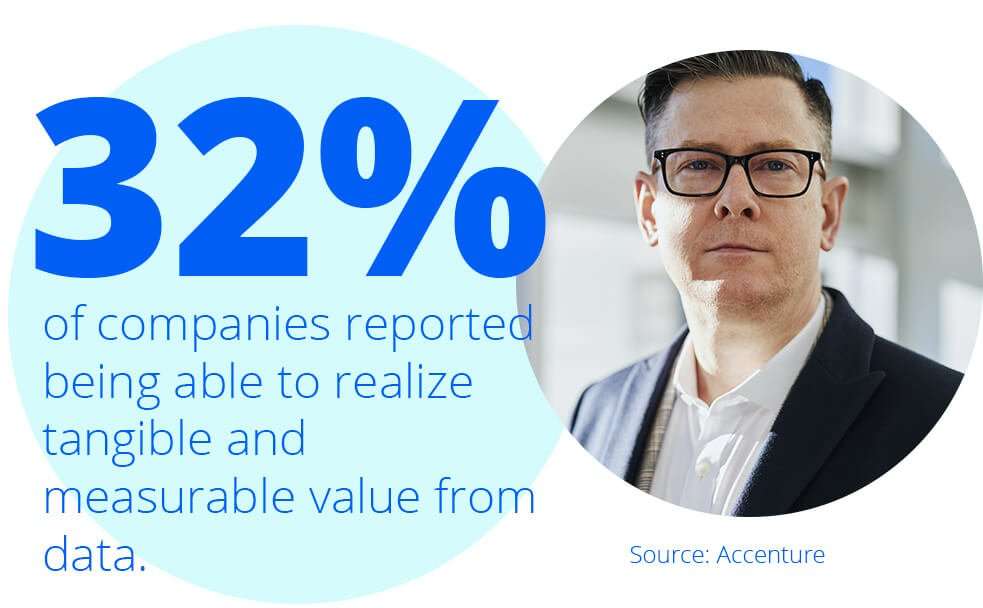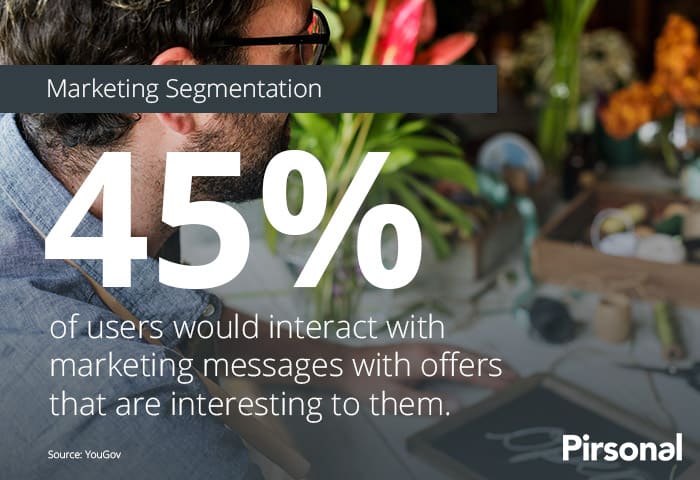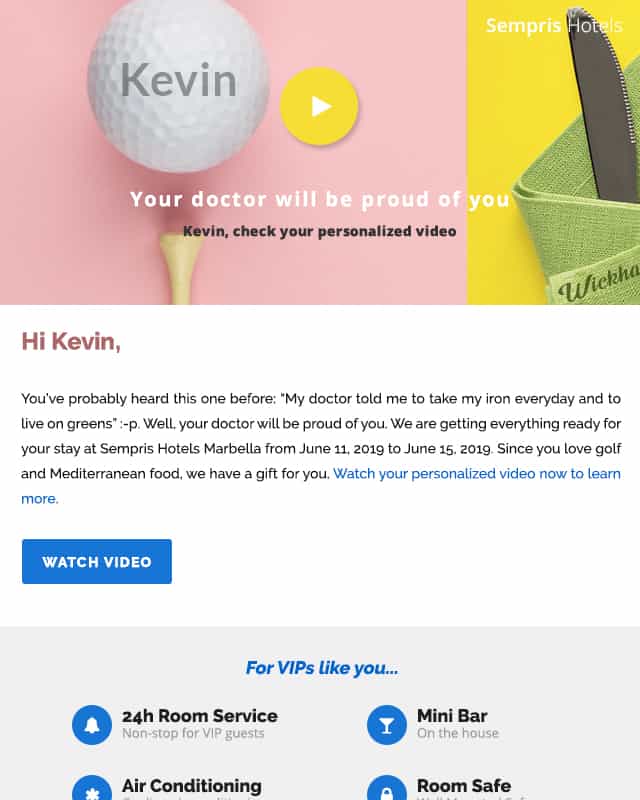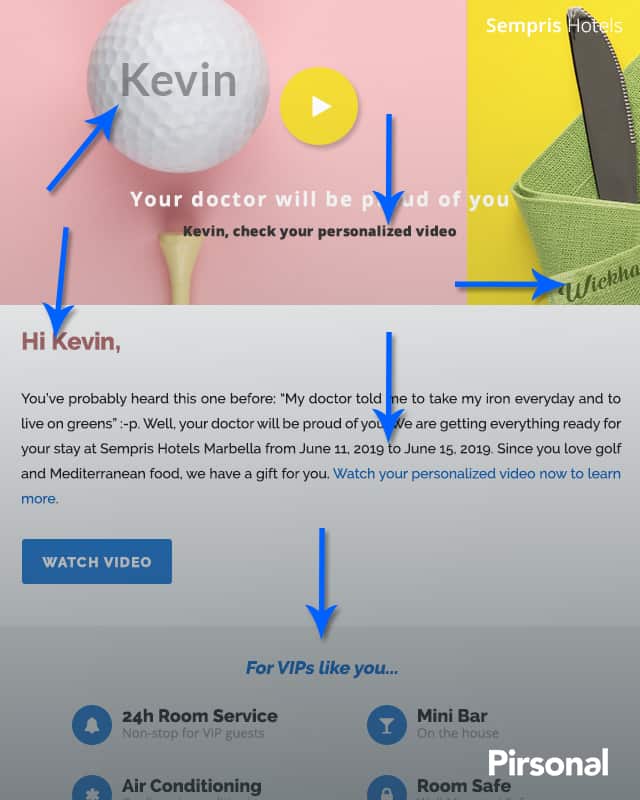If you work in marketing for an established organization, you’ve likely come across what I call the “engagement war.” Simply put, your audiences are constantly bombarded with marketing and sales messages that your audience ignores.
This includes your current customers. Those that are driving sales and revenue as we speak.
If your potential customers ignore your messages, it’s bad news. But what happens if your current customers do the same?
It’s even worse.
This is why customer marketing matters. Experience shows that successful organizations not only focus on attracting customers but even more on keeping them.
Today, you’ll learn how to start with personalization in your customer marketing efforts.
Why customer marketing matters
One of the key reasons why customer marketing matters is that acquiring new customers can be expensive while retaining existing customers can be more cost-effective.
Acquiring new customers often involves significant marketing and advertising costs, as well as investments in sales and customer acquisition channels.
However, retaining existing customers typically requires ongoing investments in customer service, loyalty programs, and personalized marketing campaigns which tend to be more cost-effective.
In addition, existing customers tend to spend more than new customers. Upselling and cross-selling initiatives are big revenue drivers in many industries. Chances are that in yours too.
According to a study by Bain & Company, increasing customer retention rates by 5% can increase profits by 25% to 95%.
¿Por qué?
There are a few reasons why this happens. For example, existing customers tend to spend more and refer others to the brand.
Furthermore, existing customers have a higher lifetime value than new customers.
The lifetime value of a customer refers to the total revenue generated by a customer throughout their relationship with a brand. The higher, the better.
Since existing customers are more likely to make repeat purchases and become brand advocates, they tend to have a higher lifetime value than new customers.
In fact, this is one of the reasons why brands have increased their investments in customer experience management.
Finally, retaining existing customers is essential for long-term business success.
Remember, a loyal customer base can provide stable revenue and protect from market fluctuations like the current one.
In addition, loyal customers are more likely to provide valuable feedback and insights that can help businesses improve their products and services.
As a product guy, this is one of my favorite things and one of the reasons I try to speak to every customer at Pirsonal.
In summary, while attracting new customers is important, retaining existing customers is generally more financially beneficial. Businesses can boost customer lifetime value, cut acquisition costs, and create a faithful customer base by investing in customer retention.
So let’s take a closer look at what customer marketing is and how you can start today.
What’s customer marketing?
Customer marketing is a marketing approach that focuses on building strong relationships with existing customers.
It differs from other marketing approaches such as acquisition marketing, which focuses on attracting new customers.
In my experience, the best way to focus on existing customers is by understanding their needs and providing them with personalized experiences.
The most effective experiences are those that adapt to their needs, concerns, and goals across the customer journey.
When you focus on customer marketing, then, you increase customer loyalty, drive repeat purchases, and create brand advocates.
One of the key advantages of working with existing customers is that they have already provided data.
Successful customer experience, customer, and product marketing teams use this information to increase satisfaction, sales, and overall revenue.
#1 Goals and KPIs for personalization in customer marketing
Defining clear goals and KPIs (key performance indicators) is essential for using personalization effectively in customer marketing.
Otherwise, it will be something fancy but with low impact, which is what some of your competitors already do.
The goals and KPIs should align with the overall business objectives and help measure the impact of personalization on customer engagement, retention, and revenue.
Some common goals for using personalization in customer marketing include improving customer satisfaction, increasing customer lifetime value, and driving conversions.
To track progress towards the goals, some useful KPIs are click-through rates, open rates, time spent on site, repeat purchase rate, and revenue per customer.
It’s also important to establish a feedback loop for monitoring and optimizing the effectiveness of personalization strategies.
This may involve conducting regular testing and analysis to identify areas for improvement, and making adjustments to the personalization approach based on the insights gained.
I often recommend 3 to 6 months of running A/B tests and focusing on specific indicators.
By setting clear goals and KPIs, and establishing a feedback loop for continuous improvement, brands can use personalization to create a more engaging and effective customer marketing strategy that drives business growth.
#2 Customer data collection
Data collection is simply when you gather customer data in any way. From the customer’s name, product, address, and more.
Data collection can happen across the customer journey. So it doesn’t really have to happen at once. Simply make sure to capture the data you need at every stage according to your goals.

To expand your team’s abilities in customer marketing, collecting customer data in an organized manner is essential for success. The easiest way to do this is through a customer relationship management software (CRM) or marketing tool.
In many cases, data collection starts before we even talk about a company or an individual becoming a customer. For example, when a person submitted a lead generation web form.
To personalize your marketing efforts, you need to collect data about your customers.
For B2C, this may involve simple demographic data like age, gender, and location, as well as more complex information such as purchase records, browsing habits, and social media engagement.
In B2B, this can include the company name, size of the organization, seniority level, and budget.
By collecting this data, you can gain insights into your customers’ preferences and behavior. Use this information in your customer communications, product management, and sales efforts.
#3 Segmentation
Once you have collected customer data, you can segment your customer base into different groups based on shared characteristics such as demographics, interests, and behavior.

The more effective communications are those that are segmented. This is especially true for saturated channels like email.
But you can also apply this to in-product communications. From chatbots to onboarding messages.
By segmenting your customer base, you can create more targeted and personalized marketing campaigns that are more likely to resonate with specific customer groups.
Customer marketing is even more effective when you use buyer personas.
A buyer persona is a fictional representation of a brand’s ideal customer. Buyer personas are based on market research and real data about existing customers.
It is a tool used in marketing to better understand and target a brand’s audience with or without personalized messages.
A buyer persona includes demographic (age, gender, income, education level, job title) and psychographics (values, interests, motivations) information.
You usually put that information behind a name. For instance, a customer you know who shares those characteristics. Then, your marketing team refers to those similar customers by that name.
By using this information, brands can gain a better understanding of their target audience and create customer marketing campaigns that directly address their needs and desires.
In customer marketing, a buyer persona can help you to:
- Identify and target the right audience for their products or services,
- Develop more effective customer marketing campaigns that resonate with a segment of your customer base,
- Personalize their marketing messages to improve customer engagement.
Creating a buyer persona requires market research, including surveys, interviews, and data analysis.
By investing in this research, you can gain a deeper understanding of your customers, and create more effective customer marketing strategies that drive business growth.
Want to use email marketing to automatically segment your audience? Watch this video to learn a strategy you can apply today with your favorite marketing automation software.
#4 Personalized content
Personalization is the process of tailoring content, offers, and experiences to individual customers based on their data. This data can be powered by your CRM or marketing tool, preferences, interests, and behavior.
By personalizing your marketing efforts, you can create a more engaging and relevant experience for your customers. Personalization is one of the most effective customer engagement strategies.
For example, watch the following video to learn how to use personalization across the customer journey.
This leads to increased customer loyalty, higher conversion rates, and greater customer lifetime value.
Personalization can also help you stand out in a crowded market, as customers are more likely to choose a brand that offers personalized experiences.
In fact, Mckinsey reports that 76% get frustrated at brands that don’t deliver a personalized experience.
Personalized content can take many forms, including product recommendations, email campaigns, videos, and website experiences.
Videos represent a growing trend and opportunity among marketing teams.
A personalized video is a video that is automatically tailored for an individual viewer, based on structured information.
Here is an example used by a hotel in Mexico to help customers upgrade to a superior experience:
The following image shows a personalized email with a data-driven video.

In the following image, I highlighted the content that is personalized for this customer.

This is possible thanks to specialized personalized video software that creates the videos automatically based on structured information from any source, including your CRM.
A personalized video can feature the viewer’s name, location, or other personal details, as well as products or services tailored to their interests and behavior.
The average customer hasn’t seen this type of video yet.
Personalized videos are used in marketing to create a more engaging and relevant experience for each viewer.
Since video is easier to digest, customers pay more attention. And, thanks to personalization, the video is more relevant to audiences of one.
To create a personalized video, marketers typically use customer data they have in spreadsheets, CRM, or marketing automation tools.
Personalized videos can be used for a variety of customer marketing purposes, including customer onboarding, event invitations, and more.
Watch the following case study about how a medical services brand improved customer onboarding with personalized videos while accelerating online payments.
They can be delivered through a variety of channels, including email, social media, and web pages.
Personalized videos can enhance customer engagement and boost conversions by creating a memorable and relevant experience for every viewer.
For example, you can use past purchase behavior to recommend similar products or use email marketing to send personalized video offers based on a customer’s browsing history.
Most marketing teams don’t have experience with data-driven videos in customer marketing strategies. This is why at Pirsonal we walk with them to help them boost customer engagement with video personalization at scale. Contact us today to learn how we can help your team as well!
#5 Marketing automation
Thanks to technology, there is no point in sending personalized messages manually. Marketing automation tools can help you deliver personalized content at scale.
Automated tools can simplify email marketing to your customer base. By utilizing social media channels and website personalization, you can potentially enhance customer interactions and tailor unique experiences to customers.
Nowadays, no matter the channel you use, you can send personalized messages to customers. Even through direct mail campaigns.
#6 Measuring success
To gauge the effectiveness of your customer marketing and personalization strategies, you can monitor metrics such as email click-throughs, customer feedback, engagement rates, and revenue growth.
This continuous feedback loop will help you identify areas of improvement. I usually recommend starting with the distribution channel. For instance, improving email open rates through better email subject lines or email click-through rates with visual content like video thumbnails.
By measuring these metrics, you can determine which channel, personalization strategies, and type of relevant content are most effective and adjust your approach accordingly.
#7 Best practices and case studies
By learning from best practices and case studies, you can gain insights into how other companies have successfully implemented personalization in their customer marketing initiatives.
This can help you identify new strategies to try and avoid common pitfalls. For example, Amazon uses personalized product recommendations to drive sales, while Netflix uses personalized content recommendations to increase customer engagement.
Similarly, BMW Financial Services uses personalized videos to help new customers understand their contracts, decrease customer churn, and increase lifetime value.

Conclusión
In summary, personalization is an essential part of customer marketing initiatives.
Collecting customer data, segmenting your customers, and providing personalized content can lead to more engaging experiences. This can boost customer loyalty, drive conversions, and create brand advocates.
Marketing automation tools and metrics tracking can help you deliver personalized experiences at scale and measure the success of your customer marketing efforts.

